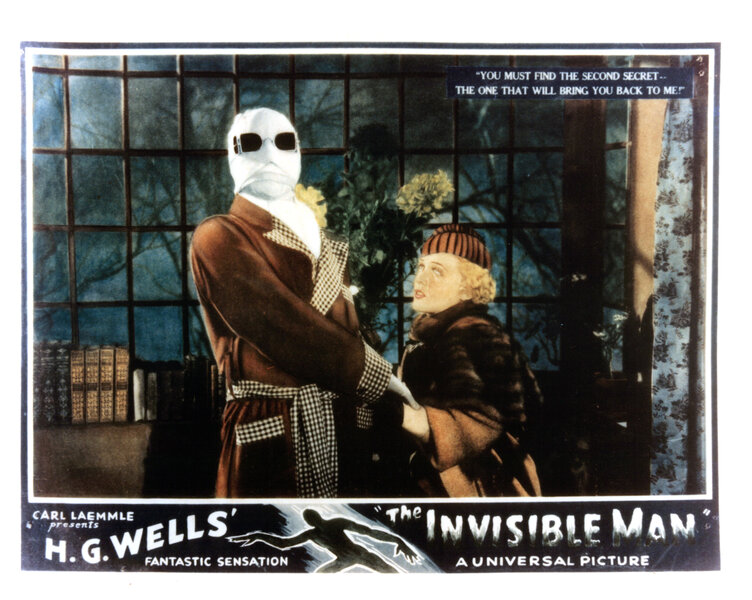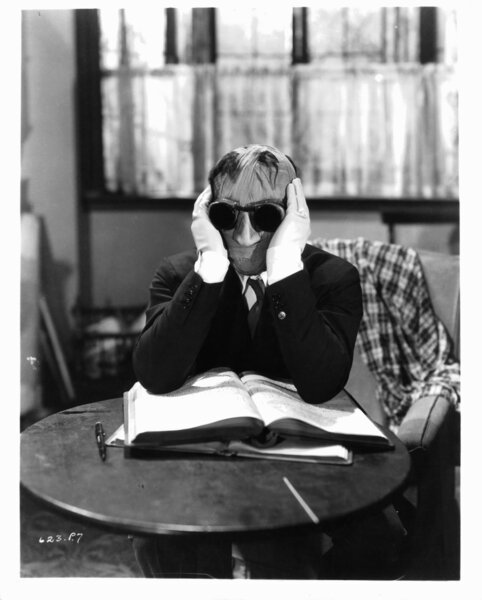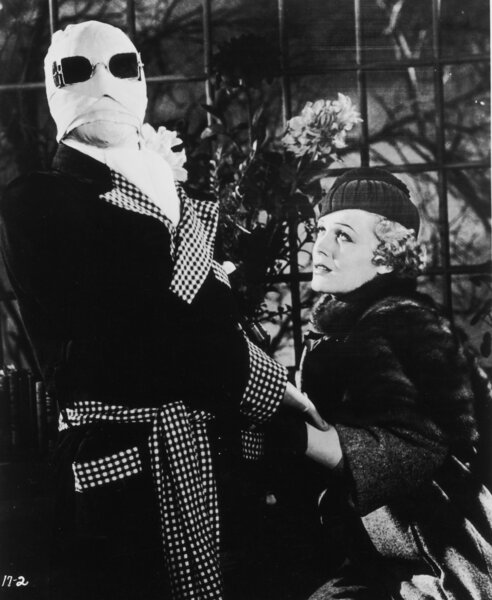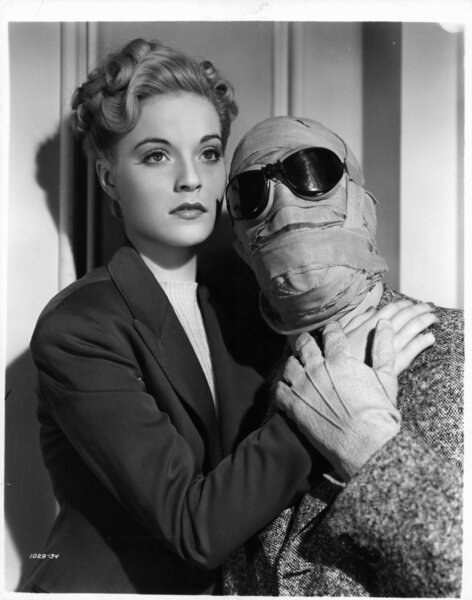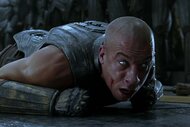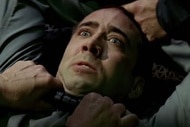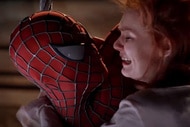Create a free profile to get unlimited access to exclusive videos, sweepstakes, and more!
Look of the Week: The original Invisible Man's dapper style
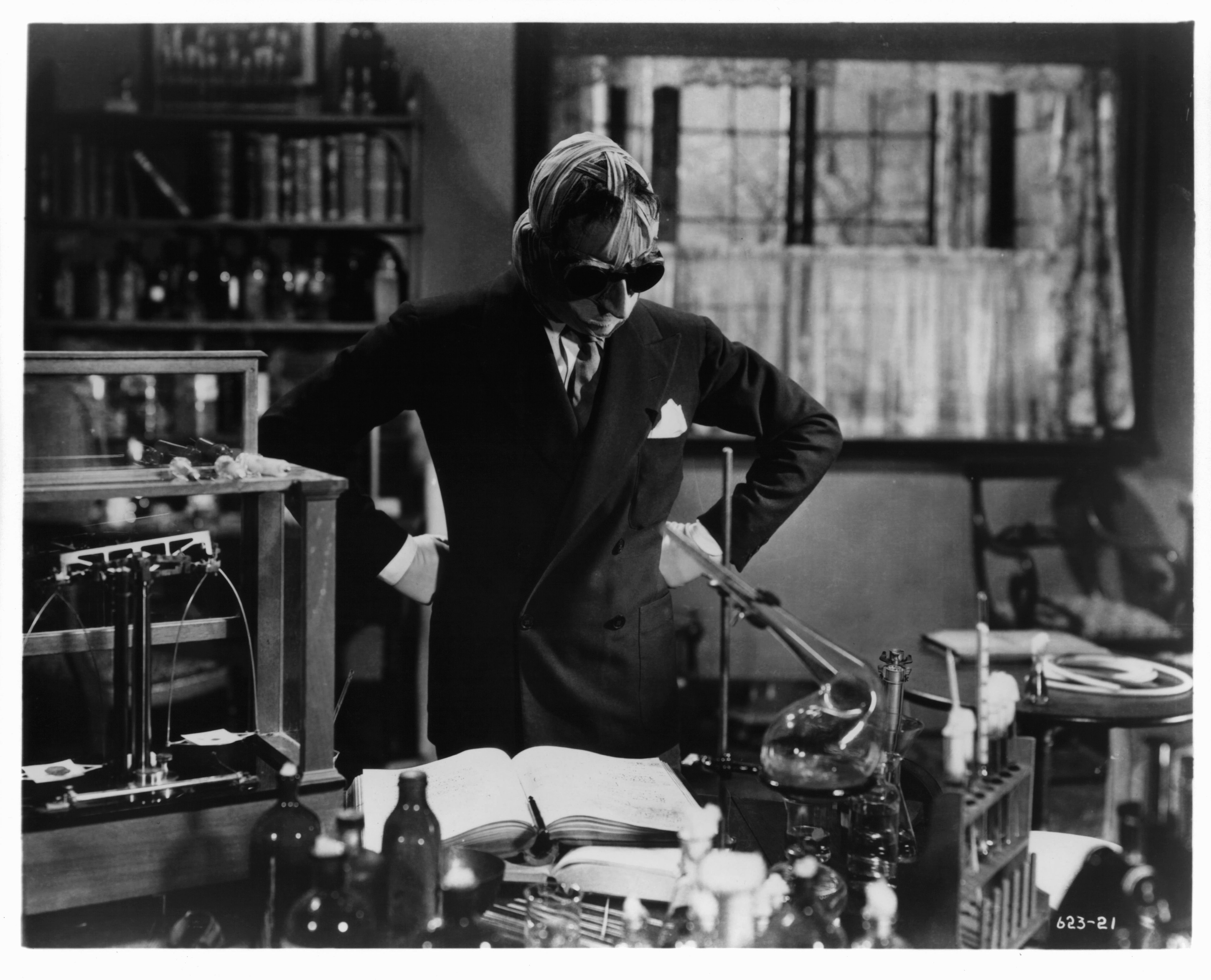
Welcome back to Look of the Week, celebrating the best in TV and film sartorial excellence, past and present across sci-fi, horror, fantasy, and other genre classics!
Clothes help form a concept of the person you want the world to see. In the case of "The Invisible One," without clothing, the only impression he makes is footprints left in the snow. Based on the 1897 novel by H.G. Wells, the original 1933 adaptation of The Invisible Man delivered an indelible image of a bandaged scientist whose experiments had left him lacking visible form. This story has been told many times, but Leigh Whannell's version starring Elisabeth Moss — in theaters today — is taking a new approach to the motivations of the titular character, as well as the science that allows him to disappear.
To celebrate this new depiction of an iconic science fiction character, we are going back to the beginning — because even though you can't see his face or body, it doesn't mean sartorial standards fade too.
Directed by James Whale, The Invisible Man is a technological marvel nearly 100 years after it was made. The '30s were a time of great cinematic innovation, and the special effects and techniques used to create the illusion of invisibility are incredible. Costume plays a big part in this — there is no credited designer, sadly — as everything Dr. Jack Griffin (Claude Rains) wears provides him physical form. Careful consideration has to be taken into every garment, as his entire body has to be covered (including his hands) in order to keep up the notion that he cannot be seen. When he does undress the impact is instant, from the first moment he removes his bandages to the scene in which he taunts the local police officer in just his overshirt. He runs around the room dressed like Winnie the Pooh (top no bottoms), but far more intimidating.
The ghoulish visage of a seemingly levitating piece of clothing only fuels the villagers' beliefs that they have a monster in their midst. When he arrives one snowy evening looking for a room with a fire, the dark glasses and the crudely bandaged face cause quite a stir. His brusque demeanor and his demand for privacy only add to the suspicions he is a criminal. Wearing a buttoned-up coat and face-hiding hat seems like a sensible choice considering the snowy weather, but suspicions are raised further when he refuses to remove them so they can be dried. He has the demeanor of a person trying to hide, but little do The Lion's Head patrons know that he is trying to conceal something that cannot be seen.
Clothing is the only thing that makes Jack look human, and the reason he has picked this particular establishment is the hope that he would find some peace and quiet to reverse the transformation and become visible once again. Unfortunately for him, this is a pub, not a secret laboratory. Sure, he is dressed in a double-breasted suit — denoting his status in contrast to the working-class drinkers who frequent this establishment — but he can't just make demands because his clothes look nice. After throwing what can be best described as a tantrum, Jack departs the place he had temporarily called home.
"You'll feel better if you can see me," Jack tells scientist colleague Dr. Arthur Kemp (William Harrigan) when he breaks into his home later that night. Any concern about Jack's well-being is undermined by the way he barks orders at Kemp, demanding cigarettes, pajamas, a robe, gloves, bandages, and glasses. He threatens to bash his brains in with a fireplace poker, which is not a great way to reassure his co-worker he is going to play nice.
Luckily for Jack, Kemp has excellent taste in bed attire, providing him with classic striped PJs and a gingham-accented robe. This combination also proves that successful pattern clashing is also achievable with loungewear. It is hard to ignore just how debonair he looks in this getup, even if he is being a menace. The robe takes on an almost trench-coat-style quality as he ensures it is fully done up, and a cravat adds to the dapper presentation. Jack even gets a sunglasses upgrade, thanks to Kemp. The winged pair provide complete coverage while also being on trend for the '30s period.
Jack's suave attire is perfect for his surprise reunion with Flora Cranley (Gloria Stuart), the fiancee he abandoned when his body disappeared from sight. Jack claims his dangerous experiments were all for her in order to prove he was a great scientist, but this explanation is paper-thin. Sure, the monocane drug has impacted his cognitive reasoning, but his choice to head down a risky path was motivated by ego and ambition. Flora plays the supportive partner throughout; she is not put off by his bandages or even the body count he racks up. Instead, she stands by her man, no matter what he does. She doesn't let the post-midnight meetup time impact her outfit choice, switching out of her luxurious nightdress for a fur shrug and a jaunty hat. Her headwear isn't an afterthought or protection against the elements; rather, it proves her point that she knows him better than anyone else.
"That funny little hat I always liked," he remarks upon seeing her for the first time since fleeing, and for a moment, Jack is who he once was. Nevertheless, it can't last, as the drugs are impacting his brain and the police have surrounded the house. He ditches the nightwear — not because it would be an etiquette issue to step outside in pajama, but his escape will be hampered by garments revealing his form.
One lesson to be taken from this story (other than don't mess with dangerous chemicals) is that if you're going to gain invisibility powers, winter is the worst time to make this discovery. I dread to think how cut up Jack's feet are, and this isn't even factoring in the issue of the freezing-cold temperatures. That doesn't excuse his abhorrent and murderous impulses, but the seasonal factor means I can forgive his rudeness when he demands a fire and a blanket. And if he can't see his body, how will he ever know he is clean?
"Clothes make the man" sounds like ad copy from the period this film was made in, but in the case of Dr. Jack Griffin, these physical items are his tether to the world he is losing a grip on. Clothing makes him literally seen; undressing allows him to escape undetected. He does note there are other ways for his body to take form, including an hour after eating (his undigested food is not impacted by the drug monocane) and in mist or fog. But when he isn't fleeing from the law, his look is pretty timeless — bandages aside — which provides a foundation for the tradition that the villain is the best-dressed character on screen.
If you watch the original Invisible Man, you will see a robe that doubles as a trench coat and pajama chic, as well as nightdresses that could be gowns. Thankfully, you don't have to be invisible to pull these looks off.
